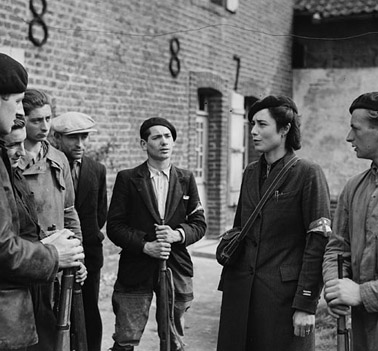Belatedly discovering Zadie Smith .. and Olbermann’s back : 2016 holiday gifts from the world wide web
Dec 20th, 2016 | By Citizen X | Category: In Brief

Keith Olbermann’s latest incarnation : “Denounced by Trump and hacked by Russia. I'm, like, a smart person.”
Almost a month ago the editor in chief reported on how the “usually agreeable X keeps telling me that he is working on some major tone poem called ‘Toronto notes : Donald Trump as Rob Ford, Part Deux .. and that really did end tragically.’ He wants to take the time to get it right. It will be ready soon …etc.”
I am here now to report myself that I have finally abandoned this project, except for the long-meditated first two paragraphs, as follows :
“My first reaction to the new America of Donald Trump is just to avoid it as much as possible. Stop watching the news on US TV. Watch old movies instead.
“My sober second thought is to seek consolation in the view that  American political history is about to turn into a comic book for the next four years. And I should at least aspire to the Classics Illustrated brand that I valued so highly in my childhood.”
Now, in a cold and snowy late December of the fateful year 2016, I can further report that pursuing this train of thought has at last led me in two more sensible directions :
(1) OLBERMANN’S BACK. To start with I’ve rediscovered Keith Olbermann, now leading something called The Resistance on the GQ magazine website.
The counterweights editors first belatedly discovered him on this website with “Who is Keith Olbermann? .. getting real at last on MSNBC,” on September 28, 2006 – more than 10 years ago.
For further counterweights reflections on the bumpy course of the Olbermann career see : “Hey MSNBC, you’ve made your point – Put Keith Olbermann Back On The Air NOW!” (November 7, 2010) ; and “Waiting for Keith Olbermann’s new Huffington Post style media empire?” (January 23, 2011).
For the latest installment of the current Olbermann incarnation – as leader of The Resistance on the GQ magazine site – Â see “Alexander Hamilton’s Plan to Keep Trump From the White House … The Electoral College was designed to prevent just this sort of emergency.”
(And for a recent feisty Olbermann tweet on key current events see “You treacherous Russian whore @realDonaldTrump the White House and all of us have been after you for this for months. And we will get you.”)
* * * *

Plaque de la place Marc Bloch dans le 20e arrondissement de Paris. The great historian was murdered by the Nazis for his role in the French Resistance.
Of course the electoral college that met formally yesterday, on Monday, December 19, 2016, has not changed the results of the November 8 US election.
On this the informed commentators got it right this time. As someone wisely pointed out on US TV this past Sunday, the last thing anyone needs right now is someone or something telling Donald Trump he hasn’t actually won the election!
But I’ve always admired the Resistance in France during the Second World War.
And joining Keith Olbermann’s cyberspace Resistance in America today seems one way of recapturing the romance of the great Marc Bloch and his fellow freedom fighters, without having to face virtually any of their very serious dangers. (Especially if you already live in Canada.)
(2) BELATEDLY DISCOVERING ZADIE SMITH. One helpful thing about surprising big political events is that they can lead you to fresh intellectual discoveries, as you struggle to understand what has happened..
Zadie Smith has been “one of our generation’s significant literary minds” in the English-speaking global village for as much as 15 years now. But I usually don’t read novels, and she has been primarily a novelist – as well as an accomplished essayist.
It is only now in the politically fateful year 2016 that I have finally caught up with her. And that is largely because she has written two compelling essays on the two key political events of the year now about to end, in the same English-speaking global village – Brexit in the UK and Donald Trump in the USA.
Both pieces have appeared in the New York Review of Books – “Fences: A Brexit Diary” in the August 18, 2016 issue, and “On Optimism and Despair” in the December 22, 2016 issue.
(The second piece is actually “A talk given in Berlin on November 10 on receiving the 2016 Welt Literature Prize.” The date was only two days after the US election. As Ms Smith notes in her first paragraph : “here we are. President Trump rises in the west, a united Europe drops below the horizon on the other side of the ocean,” among “many … important things … rendered absurd by the events of November 8.”)
Zadie Smith’s latest novel, Swing Time, has just recently appeared as well. And, impressed so much by her Brexit and Trump essays, in a happy surprise, I have at least now read two reviews of Swing Time – by Joanna Biggs in the 1 December 2016 issue of the London Review of Books, and Claire Messud in the December 8, 2016 issue of the New York Review of Books.
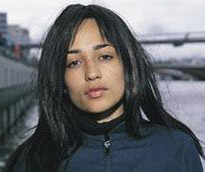 Whatever else, I’ve found that reading Zadie Smith on Brexit and Donald Trump – and then a few other things of hers over the past several years as well – has helped me see what remains attractive and forward-looking in the otherwise dreary trends of the present holiday season.
Whatever else, I’ve found that reading Zadie Smith on Brexit and Donald Trump – and then a few other things of hers over the past several years as well – has helped me see what remains attractive and forward-looking in the otherwise dreary trends of the present holiday season.
Like many others these days, no doubt, I find her still attractively packaged experience a kind of antidote to the infections being spread by the latest right-wing revolutions. And while surfing the net I have discovered a little more. On just what Ms Smith and her award-winning poet-husband Nick Laird and their two children are all about. (Very superficially of course.) For those who still have enough energy to carry on.
(a) “The couple … are now based between New York City and Queen’s Park, London,” I
This is already far too long … but …
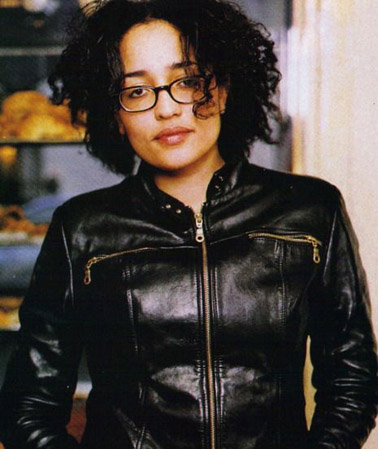 Zadie Smith was born in 1975 in a culturally diverse part (postal code) of the present-day global metropolis of London, England known as “North West” – the setting for her novel NW, and apparently (much of/some of?) her other fiction as well.
Zadie Smith was born in 1975 in a culturally diverse part (postal code) of the present-day global metropolis of London, England known as “North West” – the setting for her novel NW, and apparently (much of/some of?) her other fiction as well.
Her five novels to date are  :  White Teeth (2000) ; The Autograph Man (2002) ; On Beauty (2005) ; NW (2012) ; and Swing Time (2016).
A literary critic dubbed her early work “hysterical realism.” But she seems rather cool to me, somewhat like President Obama.
I did tell my own TV viewing partner that she might like Zadie Smith’s writing because it was “girly.” That is an appalling thing to say in the 21st century. Something of the sort is nonetheless part of Ms Smith’s charm, to me … (And I should note that I was born in 1945 – and Zadie Smith is from my children’s generation.)
Ms Smith’s late father (1925—2006) “was a member of the white working class” of whom she seems to have been quite fond. She went “on my very first European book tour, to Germany, with my father, who had last been here in 1945, as a young soldier in the reconstruction.”
Her still very much alive and active mother is a black lady originally from Jamaica (in 1969). And Ms Smith reports two incidents of related Brexit-induced hysteria early this past summer, even in North West London.
They were “reported by my Jamaican-born mother. A week before the vote a skinhead ran up to her in Willesden and shouted ‘Ãœber Alles Deutschland!’ in her face … The day after the vote, a lady shopping for linens and towels on the Kilburn High Road stood near my mother and the half-dozen other people originally from other places and announced to no one in particular: ‘Well, you’ll all have to go home now!’”
(b) “The couple … are now based between New York City and Queen’s Park, London,” II
 It seems obvious enough that, in part at least, Zadie Smith came on stream in the early 21st century as a poster child for the kind of “multiculturalism” that had put down roots in the part of London where she grew up – and still spends her summers.
It seems obvious enough that, in part at least, Zadie Smith came on stream in the early 21st century as a poster child for the kind of “multiculturalism” that had put down roots in the part of London where she grew up – and still spends her summers.
(In Toronto where I live 51% of the population today has been “born outside Canada,” from all around the global village. And a similar multiculturalism has put down roots – in a place known in the 1930s as “the citadel of British sentiment in America,” much influenced by the old metropolis of the empire on which the sun never dared to set since, say, the early 19th century.)
But there also seems a kind of unexplainable magic at work in Ms. Smith’s career, an almost natural charisma or magnetism, rooted in both herself and perhaps her immediate family.
Her Wikipedia biography explains “Zadie Smith was born as Sadie Smith in the north-west London borough of Brent … Â Her parents divorced when she was a teenager. When she was 14, she changed her name to ‘Zadie’.” Today she also has “two younger brothers, one of whom is the rapper and stand-up comedian Doc Brown and the other is rapper Luc Skyz.”
Her Wikipedia biography also reports : “Smith attended the local state schools, Malorees Junior School and Hampstead Comprehensive School, and King’s College, Cambridge, where she studied English literature … At Cambridge she published a number of short stories in a collection of new student writing called The Mays Anthology. These attracted the attention of a publisher, who offered her a contract for her first novel. Smith decided to contact a literary agent and was taken on by A. P. Watt …”
In other words, Zadie Smith’s successful writing career started remarkably early. She was a clever mixed-race girl from the multicultural North West London projects (no longer council flats?) of the late 20th century. And through sheer intelligence, emotional willpower, and old-fashioned hard work she went to the traditional English elite university of Cambridge on scholarship, and then rather quickly became what Joanna Biggs has just described in 2016 as “the most famous living British novelist.”
(c) “The couple … are now based between New York City and Queen’s Park, London,” III
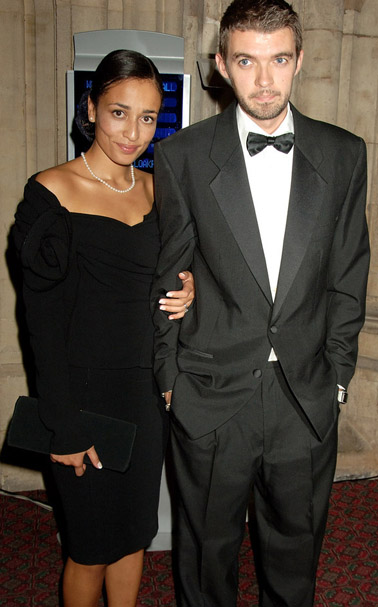
Zadie Smith : “Am I a Bond girl? No, no. That's just my husband, award-winning poet Nick Laird. We met at Cambridge.”
At Cambridge Zadie Smith also met the (later) award-winning poet (and sometime novelist) Nick Laird, from Northern Ireland. “They married in 2004 in the Chapel of King’s College, Cambridge.” They lived in Italy in 2006 and 2007.
Then Ms Smith “joined New York University’s Creative Writing Program as a tenured professor on 1 September 2010.” As explained by Wikipedia, the Smith-Lairds “are now based between New York City and Queen’s Park, London.”
(Where this particular Queen’s Park is just another part of North West London, home to such Google Map landmarks as the London Inter faith Centre, Islamia Primary School, Imam Khoei Islamic Centre, Egress Software Technologies, Malorees Junior School, Eat Sushi, Chicken Cottage, Curry Nights, and the Queen’s Park Tennis Courts.)
Along the way the Smith-Lairds acquired two children. And in 2013 their mother offered some refreshingly honest observations on being a parent : “Occasionally the child, too, is a pleasure, though mostly she is a joy, which means in fact she gives us not much pleasure at all, but rather that strange admixture of terror, pain, and delight that I have to come to recognize as joy, and now must find some way to live with daily” – Zadie Smith, mother of Katherine (“Kit”), 6, and Harvey, 3 (now a somewhat more manageable 9 and 6).
(d) “The couple … are now based between New York City and Queen’s Park, London,” IV
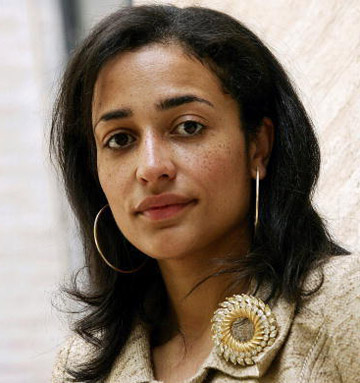 I just have four more related links on Ms Smith and her family, and that exhausts even my interest in the subject for now :
I just have four more related links on Ms Smith and her family, and that exhausts even my interest in the subject for now :
* January 15, 2014 – “A Gap in Definitions … The award-winning Northern Irish writer on life in New York, poetry as ‘a way of being alone without feeling alone,’ and why ‘all writing is political.’” An interview with Zadie Smith’s husband Nick Laird, in which he wryly observes : “With the publication of my first novel, all these articles came out that were supposed to be about my book. In reality, they were often about my wife.”
* May 23, 2014 – Â Zadie Smith, “Don’t let your fellow humans be alien to you.” This is the 2014 commencement address to the graduating class at the New School University in New York. Ms. Smith seems to be in demand for this kind of thing, and reading this suggests why.
* October 23, 2014 – Zadie Smith, “Find Your Beach.” Some of Ms. Smith’s reflections on life in Manhattan today, from the New York Review of Books. She starts with talk about the giant wall ad just out her apartment window : “Once, staring at it with a newborn in my arms, I saw another mother, in the tower opposite, holding her baby. It was 4 AM. We stood there at our respective windows, separated by a hundred feet of expensive New York air.”
Much later on, close to the end, she gets to her major ”Find Your Beach” argument : “There is a kind of individualism so stark that it seems to dovetail with an existentialist creed: Manhattan is right at that crossroads. You are pure potential in Manhattan, limitless, you are making yourself every day. When I am in England each summer, it’s the opposite: all I see are the limits of my life. The brain that puts a hairbrush in the fridge, the leg that radiates pain from the hip to the toe, the lovely children who eat all my time, the books unread and unwritten.”
 * December 14, 2016 – Marta Bausells, “In Praise of Zadie Smith’s London … Ten British Writers Find Themselves in NW.” The world in the present-day global metropolis of London that made Zadie Smith is apparently changing, on her own testimony. But something about it is also living on, as these interviews with Ten British Writers today confirm. And Marta Bausells’s first introductory paragraph, from just last week, may be a good end for these far too long notes here:
* December 14, 2016 – Marta Bausells, “In Praise of Zadie Smith’s London … Ten British Writers Find Themselves in NW.” The world in the present-day global metropolis of London that made Zadie Smith is apparently changing, on her own testimony. But something about it is also living on, as these interviews with Ten British Writers today confirm. And Marta Bausells’s first introductory paragraph, from just last week, may be a good end for these far too long notes here:
“This year needed Zadie Smith. 2016 was crying out for her particular clarity in describing identity, race and class relationships, and intimate lives in modern London; her illuminating essays on politics and culture–time to (re) read her Brexit essay if you haven’t already–and her mind-blowing literary brilliance, fantastic humor, and fascinating persona. For many of us, the publication of her new novel, Swing Time, has definitely been the best news of this fall.“
